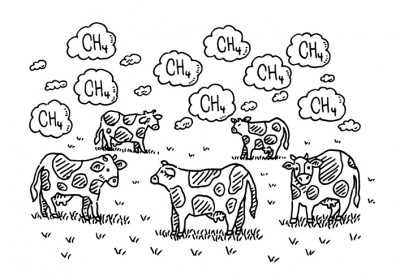Danone ventures arm invests in seaweed-based methane busting feed additive

The company claims that the Asparagopsis taxiformis-derived product, SeaGraze, reduces livestock methane emissions by over 80%.
Additional investors in the funding round include previous seed investors, Pacific6 and HATCH, new investor, Presidio Ventures, and new Hawaiian investors, Kamehameha Schools and Mana Up, along with individual local investors, farmers, and seaweed enthusiasts.
With the infusion of capital, Symbrosia said it plans to max out production of SeaGraze in its pilot facility at its headquarters, which sits within the Natural Energy Laboratory of Hawaii (NEHLA) Ocean Science and Technology Park and build a larger production facility to scale-up.
The company is also partnering with researchers, ranchers, distributors, and brands to build supply chains that reward producers for producing low-methane animal products.
SeaGraze is cultivated on non-arable land in Hawai'i, freeze dried, and pelleted on site before packing and shipping to farm gate, said a spokesperson.
Harvesting this seaweed from the wild will result in massive ecological damage, as there is simply not enough biomass available, stressed the developer. Removing significant amounts of wild seaweed would also decrease the ecosystem services they provide, such as bioremediation and habitat creation, thus further reducing the natural resilience of ocean ecosystems, it added To avoid such damage, the company said it is cultivating the seaweed using aquaculture techniques.
The product is initially being targeted at beef and dairy production but the company has also been working with sheep operations. The product can be administered in a TMR or grazing operations, according to the representative.
The plan is to be producing enough SeaGraze to supply one million cattle by the end of 2027. “We are starting with the US market and eyeing other growing global markets.”
Trial results
Symbrosia completed a commercial trial of SeaGraze in 2020, testing it on a sheep farm in Dover Plains, New York.
It outlined how it wanted to determine the enteric methane reduction and microbiome outcomes of A. taxiformis on grazing sheep. Some 45 organic-certified Whiteface Dartmoor dry ewes, all within the 18-month range, were split into three different groups of 15 ewes. Each group was assigned a different area of pasture and allied to graze until the average grass level was around 5 cm in height for a total of nine rotations lasting five days, as per company data on the trial.
A. taxiformis was made available as a free choice at a 0.25% of DMI and a 1% of DMI mixed Alfalfa pellet in a trough feeder each morning of the study period, 45 days in total.
The researchers involved noted that the sheep consumed all of the supplement within the first hour of each day. Both the high (1%) and low (0.25%) A. taxiformis feed supplements showed a 77.7% and 69.2% decrease in methane expulsion respectively, while the control group demonstrated a consistent increase in methane output throughout the course of the trial, said the team.
There was little to no difference in weight gain between all three experimental groups suggesting that there are no detrimental impacts of the supplement on the overall health of sheep included in the experiments, reported the company.
Following analysis of over 46 species of rumen bacteria, two species showed significant changes in abundance over the course of the trial compared to the control group – Butyrivibrio sp and Methanobrevibacter sp, noted the researchers. Roque et al (2019) previously studied methanobrevibacter populations in in vitro rumen studies but was unable to prove significance due to overall decrease in bacterial assemblages over the course of the trial.
This study demonstrated, through maintaining general bacterial abundance, that methanobrevibacter species decreased over time in correlation to methane reduction, said the producer.
Strain development
After that proof of concept trial, the company said it doubled down on research and technological development, eventually developing robust A. taxiformis strains that are a core differentiator, and which substantially improve the pace and unit economics of SeaGraze production.
Founder and CEO Alexia Akbay, a Forbes 30 Under 30 recipient for Social Impact in 2022, said: “During the past two years of research, we pushed the boundaries in seaweed breeding to develop high-performing seaweed strains. This Series A funding round marks a critical inflection point where we shift our focus to bringing this innovation to market at scale, as quickly as possible, with strategic partners in Hawaii, California, and the Pacific Northwest.”
She said the support from the investors, existing and new, will enable the startup to increase seaweed production by a factor of 1,000, and boost its expertise through strategic hires.








